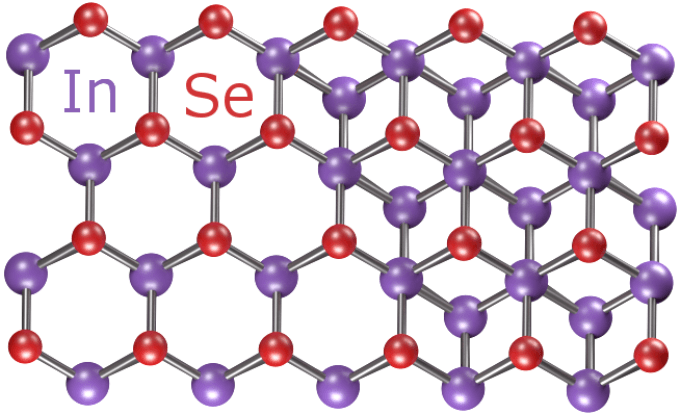Nov 22 2016
After a decade of research on graphene and 2D materials, a new semiconductor material, known as Indium Selenide (InSe), was found to exhibit the potential for prospective super-fast electronics.
 Credit: The University of Manchester
Credit: The University of Manchester
Similar to graphene, InSe is only a few atoms thick. The researchers from the University of Manchester and their collaborators from the University of Nottingham have reported the study in Nature Nanotechnology.
As graphene is only one atom thick and possesses unmatched electronic properties, it is widely suggested for use in future electronic circuits.
Graphene has no energy gap in spite of its superlative properties, and behaves very similar to a metal rather than a normal semiconductor, thereby limiting its usage in transistor-type applications.
The new study demonstrates that similar to graphene, InSe crystals can be made a few atoms thick. InSe was shown to possess electronic properties higher than that of silicon, which finds widespread usage in modern electronics.
Essentially, the large energy gap of ultra-thin InSe (which is similar to silicon but unlike graphene) allow transistors to switch on/off, thus enabling the fabrication of super-fast next-generation electronic devices.
When graphene is combined with other new materials, which individually possess excellent properties that are complementary to the exceptional characteristics of graphene, the outcomes are exciting scientific developments that can lead to applications that are beyond our imagination.
Ultra-thin InSe seems to offer the golden middle between silicon and graphene. Similar to graphene, InSe offers a naturally thin body, allowing scaling to the true nanometre dimensions. Similar to silicon, InSe is a very good semiconductor.
Sir Andre Geim, author of the study
Sir Andre Geim, who is a recipient of the Nobel Prize in Physics for research on graphene and one of the authors of this research, presumes that the new discovery could have a remarkable effect on the development of future electronics.
Researchers at the University of Manchester had to resolve one major challenge to develop high-quality InSe devices. As InSe is very thin, it can be quickly damaged by moisture and oxygen in the atmosphere. To prevent that damage, the InSe devices were fabricated in an argon atmosphere by employing new techniques developed at the National Graphene Institute.
For the first time, this enabled the development of atomically-thin high-quality InSe films. The electron mobility of the films was found to be 2000cm2/Vs at room temperature, which is considerably greater than that of silicon. At lower temperatures, this value increases multiple times.
Present experiments developed the material with the size of several micrometers, similar to the cross-section of a human hair. The researchers presume that the prevalent methods used for producing large-area graphene sheets can soon be employed to produce InSe as well, at a commercial level.
The technology that the NGI has developed for separating atomic layers of materials into high-quality two-dimensional crystals offers great opportunities to create new material systems for optoelectronics applications. We are constantly looking for new layered materials to try.
Professor Vladimir Falko, co-author of the paper and director of the National Graphene Institute
Ultra-thin InSe is one of an ever-expanding family of 2D crystals that possess a wide range of useful properties based on their chemical composition, thickness, and structure.
At present, research on graphene and other related 2D materials is the rapidly expanding field of materials science that connects engineering and science.